A Stomach Tuck, medically known as abdominoplasty, represents one of the most transformative cosmetic procedures available today. This guide delves into every aspect of stomach tuck surgery, from initial consultation to full recovery, providing you with evidence-based information to make informed decisions about your body contouring journey.
✓ Procedure Explained: Understand the different types of tummy tucks and which might be right for your body type and goals
✓ Recovery Timeline: Discover what to expect during each phase of healing with week-by-week guidance
✓ Risk Management: Learn how to minimize complications and achieve optimal results
✓ Calculator Tool: Use our proprietary recovery calculator to estimate your personal healing timeline based on your unique health profile
✓ Product Recommendations: Explore medically vetted products that can enhance your recovery experience and results
Tummy Tuck Recovery Day Tracker
Calculate your estimated recovery timeline and get personalized recommendations
Disclaimer: This calculator provides estimates only and is not a substitute for professional medical advice. Always consult with your healthcare provider for personalized guidance regarding your recovery.
Read More Guides & Try More Free Tools:
- Try our Lip Fillers Job: Cost, Side Effects & Recovery Time
- Try our Surgical Cosmetic: Procedures VS Non-Surgical
- Try our Lip Enhancement: Cost, Side Effects & Recovery Time

Table Of Contents
What is a Stomach Tuck and How Does It Transform Your Abdomen?
A Stomach Tuck, or abdominoplasty, is a surgical procedure that removes excess skin and fat from the abdominal area while tightening weakened or separated muscles. This procedure creates a smoother, firmer abdominal profile that diet and exercise alone often cannot achieve. The transformation occurs through three primary mechanisms: elimination of stubborn fat deposits that resist traditional weight loss methods, excision of loose skin that typically results from significant weight loss or pregnancy, and restoration of muscle integrity that may have been compromised through abdominal stretching.
The abdominal region contains several anatomical layers that a tummy tuck addresses:
- Skin layer: Removes stretched, excess skin that cannot retract naturally
- Fat layer: Targets stubborn adipose tissue resistant to diet and exercise
- Muscle layer: Repairs diastasis recti (separated abdominal muscles)
- Fascia layer: Tightens the connective tissue supporting core muscles
Who is an Ideal Candidate for Abdominoplasty Surgery?
Determining whether you're a suitable candidate for tummy tuck surgery involves evaluating multiple health and lifestyle factors. Ideal candidates typically share specific characteristics that maximize both safety and results. Understanding these criteria helps set realistic expectations and improves surgical outcomes.
The profile of an optimal tummy tuck candidate includes:
✓ Individuals within 10-15 pounds of their ideal body weight
✓ Non-smokers with no plans to smoke during recovery
✓ People with realistic expectations about scarring and results
✓ Those finished with childbearing, as future pregnancies can compromise results
✓ Individuals with good skin elasticity, though this varies by procedure type
✓ People struggling with diastasis recti or abdominal muscle separation
✓ Those with significant abdominal skin laxity due to massive weight loss
What Are the Different Types of Tummy Tuck Procedures Available?
Not all tummy tucks are created equal. Surgical technique varies significantly based on your anatomical needs and desired outcome. Understanding these variations ensures you select the procedure that aligns with your goals while minimizing unnecessary incisions or recovery time.
Mini Tummy Tuck: Limited Incision Abdominoplasty
The mini abdominoplasty targets concerns below the navel with a shorter incision and typically no belly button relocation. This procedure addresses mild to moderate lower abdominal laxity with less extensive dissection and faster recovery.
Key characteristics of mini tummy tucks:
✓ Incision typically 4-8 inches long, placed low on the abdomen
✓ No umbilical translocation required
✓ Minimal muscle repair, if any
✓ Suitable for patients with good skin quality and minimal excess above the navel
✓ Recovery period generally 1-2 weeks for normal activities
Full Tummy Tuck: Standard Abdominoplasty
The traditional tummy tuck remains the gold standard for comprehensive abdominal contouring. This procedure addresses both upper and lower abdominal concerns through an incision that spans hip to hip, plus umbilical repositioning.
Components of a full tummy tuck:
✓ Hip-to-hip incision strategically placed within bikini lines
✓ Circular incision around the navel for repositioning
✓ Extensive skin and fat removal from pubic area to rib cage
✓ Significant muscle repair, particularly for diastasis recti
✓ Liposuction often incorporated for flank contouring
Extended Stomach Tuck: Comprehensive Body Contouring
For patients who have experienced massive weight loss, the extended tummy tuck addresses not only the abdomen but also the flanks and upper thighs. This more invasive procedure requires longer incisions but produces dramatic circumferential improvement.
Features of extended abdominoplasty:
✓ Incision extends beyond the hips toward the back
✓ Addresses love handles and lateral thigh laxity
✓ More extensive tissue removal and redraping
✓ Longer operating time and recovery period
✓ Combined procedures often include buttock lifting
Fleur-de-Lis Tummy Tuck: Vertical and Horizontal Excision
The Fleur-de-Lis technique combines the standard horizontal excision with a vertical component, creating a T-shaped scar pattern. This approach is reserved for patients with significant horizontal and vertical excess skin.
Applications for Fleur-de-Lis abdominoplasty:
✓ Massive weight loss patients with circumferential skin excess
✓ Corrects both vertical and horizontal skin laxity
✓ Creates a more defined waistline
✓ More extensive scarring traded for superior contouring
✓ Often performed in conjunction with body lift procedures
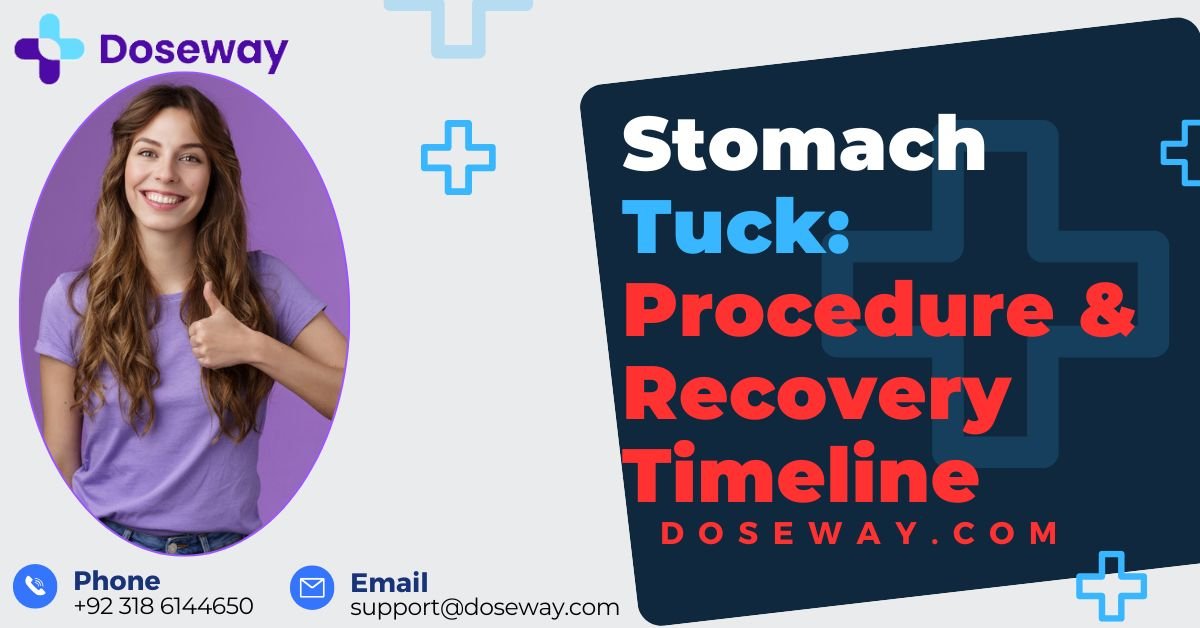
How Does the Tummy Tuck Procedure Work Step by Step?
Understanding the surgical sequence demystifies the process and prepares you mentally for the experience. From anesthesia administration to final closure, each step follows a precise protocol designed to maximize safety and aesthetic outcomes.
Preoperative Marking and Anesthesia
Before surgery begins, your surgeon will make precise markings on your abdomen while you're standing. These guidelines account for tissue removal, incision placement, and muscle repair areas. Anesthesia follows, typically general anesthesia or deep sedation with local anesthetic.
Preoperative preparations include:
✓ Fasting for 8-12 hours before surgery
✓ Marking performed with surgical pen while upright
✓ Antibiotics administered intravenously
✓ Sequential compression devices placed on legs to prevent blood clots
✓ Hair removal from surgical site if necessary
Surgical Incision and Tissue Separation
The procedure begins with incision along the predetermined lines. The surgeon carefully separates the skin and fat from the abdominal wall, creating a flap that can be stretched downward and excised. This dissection requires meticulous technique to preserve blood supply and nerve function.
Technical aspects of tissue separation:
✓ Incision depth carefully controlled to avoid underlying structures
✓ Electrocautery used for precise dissection and hemostasis
✓ Umbilicus carefully released from surrounding tissue
✓ Dissection extends to the rib cage for full muscle exposure
✓ Tissue preservation prioritized to ensure viability
Muscle Repair and Corset Suturing
The cornerstone of functional improvement in tummy tuck surgery is muscle repair. The surgeon identifies separated abdominal muscles (diastasis recti) and brings them together with permanent sutures, creating a stronger abdominal wall and narrower waistline.
Muscle repair methodology:
✓ Rectus muscles identified and freed from surrounding tissue
✓ Plication performed with multiple layers of strong, non-absorbable sutures
✓ Tension distributed evenly across repair to prevent future separation
✓ Repair extends from pubic bone to sternum for comprehensive support
✓ "Corset" technique often used for additional waist definition
Skin Redraping and excision
With muscles repaired, the surgeon pulls the abdominal skin flap downward with controlled tension. The excess tissue is trimmed, and the position for the new belly button is determined. This step requires artistic judgment to create natural contours.
Skin management considerations:
✓ Conservative resection initially, with final trimming after temporary closure
✓ Tension carefully calibrated to prevent poor scarring or healing issues
✓ Dog ear correction at incision ends for smooth transitions
✓ Liposuction often performed at this stage for refinement
✓ Tissue perfusion assessed before final excision
Umbilical Reconstruction and Closure
Creating a natural-looking navel is both art and science. The surgeon creates a new opening for the belly button and carefully sutures it in position with techniques designed to prevent stenosis or scarring. Layered closure follows with attention to scar minimization.
Closure techniques:
✓ Multiple-layer closure: muscle fascia, deep dermal, and superficial skin
✓ Drains placed to prevent seroma formation
✓ Absorbable versus non-absorbable suture selection based on surgeon preference
✓ Skin adhesive or surgical tape applied for final approximation
✓ Dressings and compression garments applied

What Factors Influence Tummy Tuck Recovery Time?
Recovery duration varies significantly between patients due to numerous individual factors. Our tummy tuck recovery calculator accounts for these variables to generate personalized estimates, but understanding each element helps you optimize your healing environment.
Surgical Technique and Extent
The type of tummy tuck performed directly impacts recovery intensity and duration. More extensive procedures involving greater tissue manipulation naturally require longer healing periods.
Procedure-specific recovery considerations:
- Mini tummy tuck: 1-2 weeks until light activity resumption
- Full tummy tuck: 2-4 weeks before returning to sedentary work
- Extended tummy tuck: 4-6 weeks until normal activities resume
- Fleur-de-Lis: 6-8 weeks for complete tissue healing
- Circumferential: 8+ weeks for full recovery
Age and Physiological Resilience
Aging affects tissue regeneration capacity, circulation efficiency, and collagen production—all critical components of surgical recovery. Younger patients typically experience faster healing, though excellent outcomes are achievable at any age with proper management.
Age-related recovery expectations:
✓ Patients under 35: Typically 2-3 weeks until normal activities
✓ Patients 35-50: Generally 3-5 weeks for complete healing
✓ Patients over 50: Often 5-8 weeks for full recovery
✓ Biological age versus chronological age considerations
✓ Prehabilitation strategies to improve physiological resilience
Pre-existing Medical Conditions
Certain health conditions can significantly impact healing capacity and complication risk. Our recovery calculator evaluates these factors to provide realistic timelines and highlight areas requiring special attention.
Medical conditions affecting tummy tuck recovery:
- Diabetes: Impairs circulation and immune response
- Hypertension: Increases bleeding and bruising risk
- Autoimmune disorders: May create excessive inflammation
- Coagulation disorders: Heighten thrombosis risk
- Nutritional deficiencies: Compromise tissue repair
- Smoking history: Vasoconstriction reduces tissue oxygenation
Lifestyle Factors and Habits
Daily habits profoundly influence surgical outcomes. The recovery calculator assesses these modifiable factors to identify opportunities for optimization before and after surgery.
Lifestyle impacts on healing:
✓ Smoking status: Nicotine causes vasoconstriction, delaying healing
✓ Alcohol consumption: Impairs immune function and promotes swelling
✓ Physical fitness: Better cardiovascular health improves recovery
✓ Nutritional status: Adequate protein and vitamins essential for repair
✓ Stress levels: Cortisol impairs wound healing
✓ Sleep quality: Growth hormone release during sleep aids recovery
What Does the Typical Tummy Tuck Recovery Timeline Look Like?
Understanding the expected progression through recovery phases helps patients recognize normal healing versus potential complications. This week-by-week guide outlines what most patients experience following standard abdominoplasty.
Immediate Postoperative Period: First 24-48 Hours
The initial recovery phase focuses on pain management, monitoring for complications, and beginning gentle mobility. Patients typically remain in the recovery facility or hospital during this period.
Key aspects of immediate recovery:
✓ Pain medication administered via IV or orally
✓ Frequent vital sign monitoring by nursing staff
✓ Drains checked and emptied regularly
✓ Compression garment kept in place
✓ Assisted ambulation begins within hours of surgery
✓ Liquid diet advanced as tolerated
First Week: Acute Healing Phase
The first week represents the most challenging period, with significant swelling, discomfort, and mobility restrictions. Proper management during this phase establishes the foundation for smooth recovery.
Week one recovery milestones:
✓ Pain transitions to manageable discomfort with oral medications
✓ Drain output monitored for decreases indicating healing
✓ Walking bent at waist to reduce tension on incision
✓ Showering typically permitted after 48 hours with drain care
✓ Swelling peaks around day 3-5 then begins gradual improvement
✓ First postoperative appointment for wound assessment
Weeks 2-4: Early Recovery Phase
During this period, patients notice significant improvement in energy levels and discomfort. Light activities resume, but restrictions remain regarding lifting and exertion.
Recovery progression weeks 2-4:
✓ Drains typically removed by end of second week
✓ Transition from prescription pain medication to OTC options
✓ Gradual transition to upright posture over 2-3 weeks
✓ Return to sedentary work possible around week 2-3
✓ Driving resumed when off narcotics and able to move comfortably
✓ Compression garment worn 24/7 except for showering
Weeks 4-6: Intermediate Recovery Phase
The intermediate phase brings near-complete resolution of discomfort and significant reduction in swelling. Patients gradually resume more normal activities while still observing certain restrictions.
Month 1-1.5 recovery developments:
✓ Light exercise such as walking stationary bike permitted
✓ Core exercises and heavy lifting still restricted
✓ Swelling continues to diminish, revealing improved contours
✓ Incision lines begin fading from red to pink
✓ Garment transition to shorter wearing hours possible
✓ Sensation gradually returns to abdominal skin
Weeks 6-12: Late Recovery Phase
By this stage, most patients feel largely recovered and enjoy their new abdominal contour. Final results become increasingly apparent as residual swelling resolves.
Months 2-3 recovery achievements:
✓ Full exercise regimen typically resumed by week 8
✓ Most swelling resolved, though some mild fluctuation continues
✓ Incision lines mature, becoming less noticeable
✓ Garment use often discontinued or limited to part-time
✓ Sensation continues to improve but may not be complete
✓ Final results becoming apparent
3-6 Months and Beyond: Final Results
The final stages of recovery involve scar maturation and complete settling of tissues. Patients can now fully appreciate the transformative results of their procedure.
Long-term recovery considerations:
✓ Scars begin fading and softening around month 3-4
✓ Residual swelling completely resolves by month 6
✓ Numbness gradually improves over 6-12 months
✓ Muscle strength fully restored with proper rehabilitation
✓ Final aesthetic outcome stable by 6-12 months
How Does Our Tummy Tuck Recovery Calculator Work?
Our proprietary recovery calculator uses evidence-based algorithms to estimate your personalized healing timeline. The tool analyzes multiple variables to generate accurate predictions and tailored recommendations for optimal recovery.
Input Parameters and Their Significance
The calculator processes user-provided information across several categories, each contributing to the recovery assessment:
Demographic Factors
- Age: Biological healing capacity estimation
- Gender: Hormonal influences on inflammation and repair
- BMI: Tissue perfusion and surgical risk calculation
- Body measurements: Surgical extent prediction
Medical History Elements
- Chronic conditions: Healing impairment assessment
- Surgical history: Tissue characteristics evaluation
- Medication usage: Bleeding and healing impact
- Allergies: Complication risk modification
Lifestyle Variables
- Activity level: Cardiovascular health indicator
- Nutrition status: Tissue repair capacity
- Substance use: Direct physiological effects
- Stress factors: Cortisol impact on healing
Algorithm Methodology
The recovery calculator employs weighted scoring across multiple domains to generate personalized estimates. The algorithm incorporates clinical data from thousands of abdominoplasty cases to refine its predictions.
Calculation methodology includes:
✓ Base recovery timeline adjusted by procedure type
✓ Modifiers applied for each risk factor identified
✓ Composite score generation across all domains
✓ Comparison to population norms for similar profiles
✓ Confidence intervals provided for estimates
Results Interpretation
The calculator output provides not just timeline estimates but also actionable insights to improve your recovery experience. Understanding how to interpret these results maximizes their utility.
Key output components:
- Estimated recovery days: Primary timeline projection
- Risk stratification: Complication probability assessment
- Personalized recommendations: Evidence-based recovery enhancements
- Comparison to norms: Contextualization of your estimate
- Progress tracking: Benchmarking against expected milestones

What Are the Potential Risks and Complications of Tummy Tuck Surgery?
Understanding potential complications enables informed consent and promotes vigilant postoperative monitoring. While serious complications are uncommon, recognizing early warning signs facilitates prompt intervention.
Common Expected Side Effects
Certain temporary effects are normal after tummy tuck surgery and represent typical healing responses rather than complications.
Expected postoperative symptoms:
✓ Swelling and bruising: Peak at 3-5 days, resolve over several weeks
✓ Numbness: Expected in lower abdomen, improves over months
✓ Tightness and discomfort: Normal after muscle repair, diminishes weekly
✓ Fatigue: Common for 2-4 weeks as energy diverted to healing
✓ Emotional variability: Normal response to surgical stress and medication
Infrequent But Significant Complications
While uncommon, certain complications require prompt recognition and management to prevent serious consequences.
Potential surgical complications:
- Hematoma: Blood collection requiring drainage
- Seroma: Fluid accumulation often needing aspiration
- Infection: Typically responsive to antibiotics if caught early
- Poor wound healing: May require local wound care
- Necrosis: Tissue death necessitating debridement
- Deep vein thrombosis: Blood clots requiring anticoagulation
- Pulmonary embolism: Life-threatening complication needing emergency care
Long-Term Considerations
Some issues may not appear immediately but can affect long-term satisfaction with results.
Delayed concerns:
✓ Hypertrophic scarring: Thickened, red scars requiring treatment
✓ Scar widening: Often related to tension or early activity
✓ Asymmetry: Noticeable once swelling resolves
✓ Contour irregularities: May need revision surgery
✓ Persistent numbness: Can last years or be permanent
✓ Recurrent laxity: Especially with weight fluctuations or pregnancies
How Can You Prepare for Tummy Tuck Surgery to Optimize Results?
Proper preparation significantly influences both safety during surgery and quality of outcomes. Implementing these strategies before your procedure creates optimal conditions for successful healing.
Medical Optimization
Addressing health issues before surgery reduces complication risks and promotes efficient recovery.
Preoperative medical preparation:
✓ Complete all required laboratory tests and clearances
✓ Optimize management of chronic conditions like diabetes or hypertension
✓ Discontinue contraindicated medications as directed
✓ Begin recommended supplements to support healing
✓ Receive necessary vaccinations before surgical immune suppression
✓ Arrange medical clearance from relevant specialists
Nutritional Preparation
Strategic nutrition before surgery builds metabolic reserves for the demanding healing process.
Dietary optimization strategies:
✓ Increase protein intake to 1.5-2g per kg of body weight
✓ Ensure adequate vitamin C, zinc, and iron levels
✓ Hydrate well in the weeks before surgery
✓ Consider arnica Montana for bruising prevention
✓ Avoid excessive salt, sugar, and processed foods
✓ Maintain stable weight for at least 3 months preoperatively
Lifestyle Adjustments
Modifying daily habits before surgery establishes patterns that support recovery.
Preoperative lifestyle modifications:
✓ Smoking cessation at least 4-6 weeks before surgery
✓ Alcohol avoidance for 2-3 weeks preoperatively
✓ Establishment of consistent sleep schedule
✓ Implementation of stress reduction techniques
✓ Gradual increase in cardiovascular exercise
✓ Practice sleeping on back with upper body elevated
Home and Social Preparation
Creating a recovery-friendly environment and support system prevents unnecessary stress during healing.
Practical preparatory steps:
✓ Arrange for help with children, pets, and household tasks
✓ Prepare recovery area with necessary supplies within easy reach
✓ Cook and freeze meals for at least 2-3 weeks
✓ Install safety devices like shower chairs and grab bars
✓ Complete all errands and work obligations beforehand
✓ Establish clear communication plan with surgical team
What Postoperative Care Maximizes Tummy Tuck Results?
Conscientious aftercare directly correlates with superior outcomes and minimized complications. These evidence-based practices support optimal healing following abdominoplasty.
Immediate Postoperative Care
The first days after surgery establish the trajectory for your entire recovery experience.
Critical early recovery practices:
✓ Strict compliance with garment wear as directed
✓ Proper drain care and output monitoring
✓ Timely administration of prescribed medications
✓ Gradual increase in ambulation as tolerated
✓ Maintenance of semi-flexed position to reduce tension
✓ Meticulous incision care following specific instructions
Wound Management
Proper care of surgical incisions promotes optimal scarring and prevents complications.
Incision care protocols:
✓ Keep incisions clean and dry according to surgeon's directions
✓ Apply recommended topical treatments as instructed
✓ Monitor for signs of infection: redness, warmth, discharge
✓ Protect incisions from sun exposure with SPF 50+
✓ Use silicone strips or sheets once approved by surgeon
✓ Avoid submerging incisions until completely healed
Activity Progression
Balancing adequate rest with appropriate activity prevents complications while promoting circulation.
Activity guidelines by recovery phase:
- Weeks 1-2: Walking frequently but limited distance, no lifting
- Weeks 3-4: Light household activities, short walks outside
- Weeks 5-6: Introduction of light cardio, avoidance of core engagement
- Weeks 7-8: Gradual return to most exercises except heavy lifting
- Months 3-4: Full activity resumption with proper form
- Months 5-6: Return to all activities including contact sports
Scar Management
Consistent scar care beginning after complete wound healing improves long-term appearance.
Evidence-based scar optimization:
✓ Silicone sheeting worn 12-24 hours daily for 2-6 months
✓ Vitamin E oil application after complete epithelialization
✓ Gentle massage once approved to prevent adhesion
✓ Sun protection with high-SPF clothing or sunscreen
✓ Professional treatments like laser for problematic scars
✓ Realistic expectations about scar maturation timeline

How Much Does a Tummy Tuck Cost and Is It Worth the Investment?
Understanding the financial commitment helps patients make informed decisions and plan appropriately for this transformative procedure.
Cost Components
The total investment includes multiple elements beyond the surgeon's fee.
Tummy tuck cost breakdown:
✓ Surgeon's fee: Based on experience, technique, and geographic location
✓ Anesthesia fees: Typically $1,000-$2,000 for board-certified anesthesiologist
✓ Facility fees: Hospital or surgical center costs including staff and supplies
✓ Medical tests: Preoperative laboratory work and clearances
✓ Garments and supplies: Compression garments, drains, wound care items
✓ Medications: Pain management, antibiotics, and other prescriptions
✓ Follow-up care: Included in surgical fee or billed separately
Geographic and Surgeon Variables
Cost varies significantly based on practice location and surgeon credentials.
Cost influencing factors:
- Geographic region: Urban centers typically command higher fees
- Surgeon experience: Board-certified plastic surgeons generally charge more
- Procedure complexity: Extended techniques involve higher costs
- Facility type: Hospital-based surgery often more expensive than accredited surgery centers
- Anesthesia type: General anesthesia costs more than sedation
Value Assessment
Evaluating tummy tuck as an investment rather than merely an expense provides proper perspective.
Value considerations beyond cost:
✓ Improved body image and self-confidence
✓ Resolution of functional issues like diastasis recti
✓ Clothing fit enhancement
✓ Long-term satisfaction when performed by qualified surgeon
✓ Psychological benefits of achieving body goals
✓ Potential motivation for maintained healthy lifestyle
What Results Can You Realistically Expect From Abdominoplasty?
Establishing appropriate expectations prevents disappointment and promotes satisfaction with outcomes. While transformative, tummy tuck surgery has limitations that patients should understand.
Immediate Versus Final Results
The appearance immediately after surgery differs significantly from long-term outcomes as swelling resolves and tissues settle.
Realistic results timeline:
- Immediately: Significant improvement but obscured by swelling
- 2-4 weeks: Basic contour visible but still swollen
- 6-8 weeks: Major improvement as most swelling resolves
- 3-6 months: Near-final appearance with minor refinement continuing
- 12+ months: Final stable result with mature scars
Limitations and Realistic Outcomes
Understanding what tummy tuck cannot achieve prevents unrealistic expectations.
Procedure limitations:
✓ Cannot achieve perfect symmetry or identical sides
✓ Will not prevent future weight fluctuations or aging changes
✓ Cannot eliminate all stretch marks, only those on excised skin
✓ Will not dramatically change overall weight
✓ Cannot create a different body type than your natural structure
✓ Will not resolve body dysmorphic disorder or self-image issues
Long-Term Result Preservation
Maintaining outcomes requires ongoing attention to lifestyle factors that affect abdominal appearance.
Strategies for result preservation:
✓ Maintain stable weight within 5-10 pounds of surgical weight
✓ Incorporate core strengthening once fully healed
✓ Practice good posture to support repaired muscles
✓ Stay hydrated and consume adequate protein for tissue health
✓ Wear supportive garments during future pregnancies
✓ Consider non-surgical maintenance treatments as needed

Frequently Asked Questions About Tummy Tuck Surgery
How Painful is Tummy Tuck Recovery?
Tummy tuck recovery involves significant discomfort, particularly in the first week, but modern pain management techniques make it manageable. Most patients describe the sensation as intense tightness and soreness rather than sharp pain. Discomfort peaks around days 2-4 then gradually improves. Proper medication use, positioning, and gradual activity make the process tolerable for most patients.
Can I Get Pregnant After a Tummy Tuck?
Yes, you can safely become pregnant after a tummy tuck, but it's not recommended if pregnancy is planned within 12-18 months. Future pregnancies will stretch your repaired muscles and skin, potentially compromising your surgical results. Ideally, women should complete their childbearing before undergoing abdominoplasty to maintain long-term outcomes.
Will a Tummy Tuck Help Me Lose Weight?
A tummy tuck is not a weight loss procedure, though patients typically lose 2-10 pounds of tissue during surgery. The primary goal is contour improvement through skin removal and muscle repair rather than significant weight reduction. Patients at or near their ideal weight achieve the best outcomes, as substantial future weight changes can compromise results.
How Long Do Tummy Tuck Results Last?
Tummy tuck results are considered permanent in that excised skin and fat will not return. However, the aging process continues, and significant weight fluctuations or pregnancies can alter outcomes. With stable weight and general health maintenance, most patients enjoy their results for decades, though some natural relaxation occurs over time.
Can a Tummy Tuck Help with Diastasis Recti?
Yes, repair of diastasis recti (separated abdominal muscles) is a fundamental component of most tummy tuck procedures. The muscle repair not only improves abdominal contour but also enhances core strength and function. Many patients report resolution of related back pain and improved posture following surgery.
What's the Difference Between a Tummy Tuck and Liposuction?
Liposuction solely removes fat through small incisions, while tummy tuck removes both skin and fat through a larger incision and includes muscle repair. Liposuction cannot address skin laxity or muscle separation. The procedures are sometimes combined for comprehensive contouring, with liposuction used to refine areas not addressed by the tummy tuck excision.
How Do I Choose the Right Tummy Tuck Surgeon?
Select a board-certified plastic surgeon with extensive abdominoplasty experience. Review before-and-after photos of actual patients, check credentials and hospital affiliations, and ensure you feel comfortable communicating with them. During consultations, ask about their complication rates and request patient references. The surgeon-patient relationship continues long after surgery through follow-up care.\
Affiliate Product Recommendations
- Marena Recovery Garments: High-quality compression garments specifically designed for post-surgical wear with medical-grade compression and innovative designs that accommodate drains and dressings.
- Bio-Oil Skincare Oil: Popular product for improving scar appearance through specialized formulation containing purcellin oil and vitamins that enhance skin elasticity and fade discoloration.
- NatureWise Vitamin C and D3 Supplements: Essential nutrients that support immune function and collagen production during recovery, with third-party testing for quality assurance.
- LivaRosa Abdominal Board: Post-surgical boards that provide even compression and support to newly repaired muscles while reducing swelling and improving comfort.
- Arnicare Bruise and Swelling Relief: Homeopathic arnica montana tablets and gel that clinically reduce bruising and swelling when used as directed before and after surgery.
- CoraCora Pregnancy Pillow: Versatile full-body pillows that provide optimal positioning support during recovery, helping maintain proper alignment while reducing tension on incisions.
- Carex Bed Assist Bar: Safety device that enables easier movement in and out of bed during early recovery when abdominal strength is compromised.


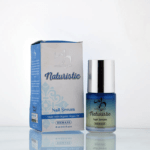



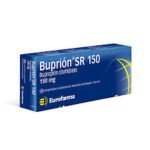


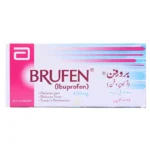
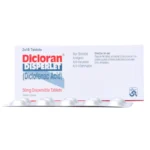

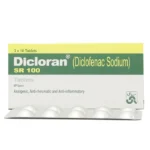
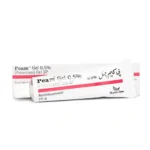

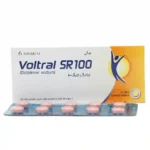
Add a Comment